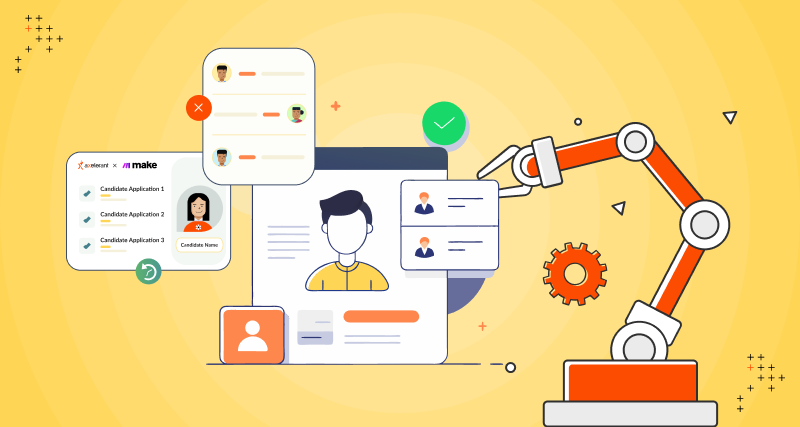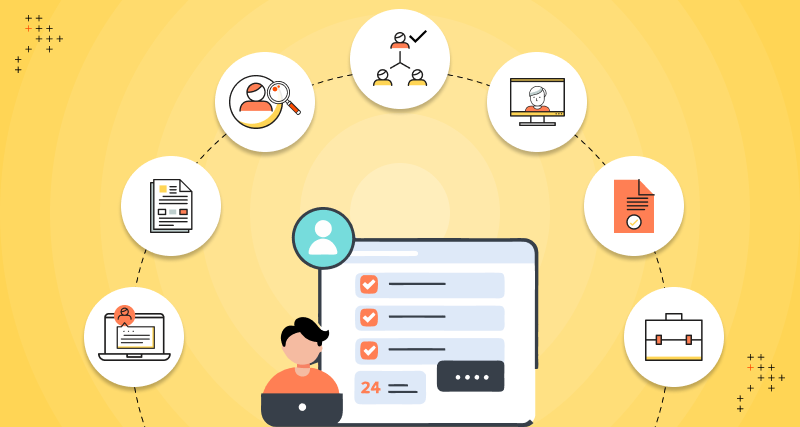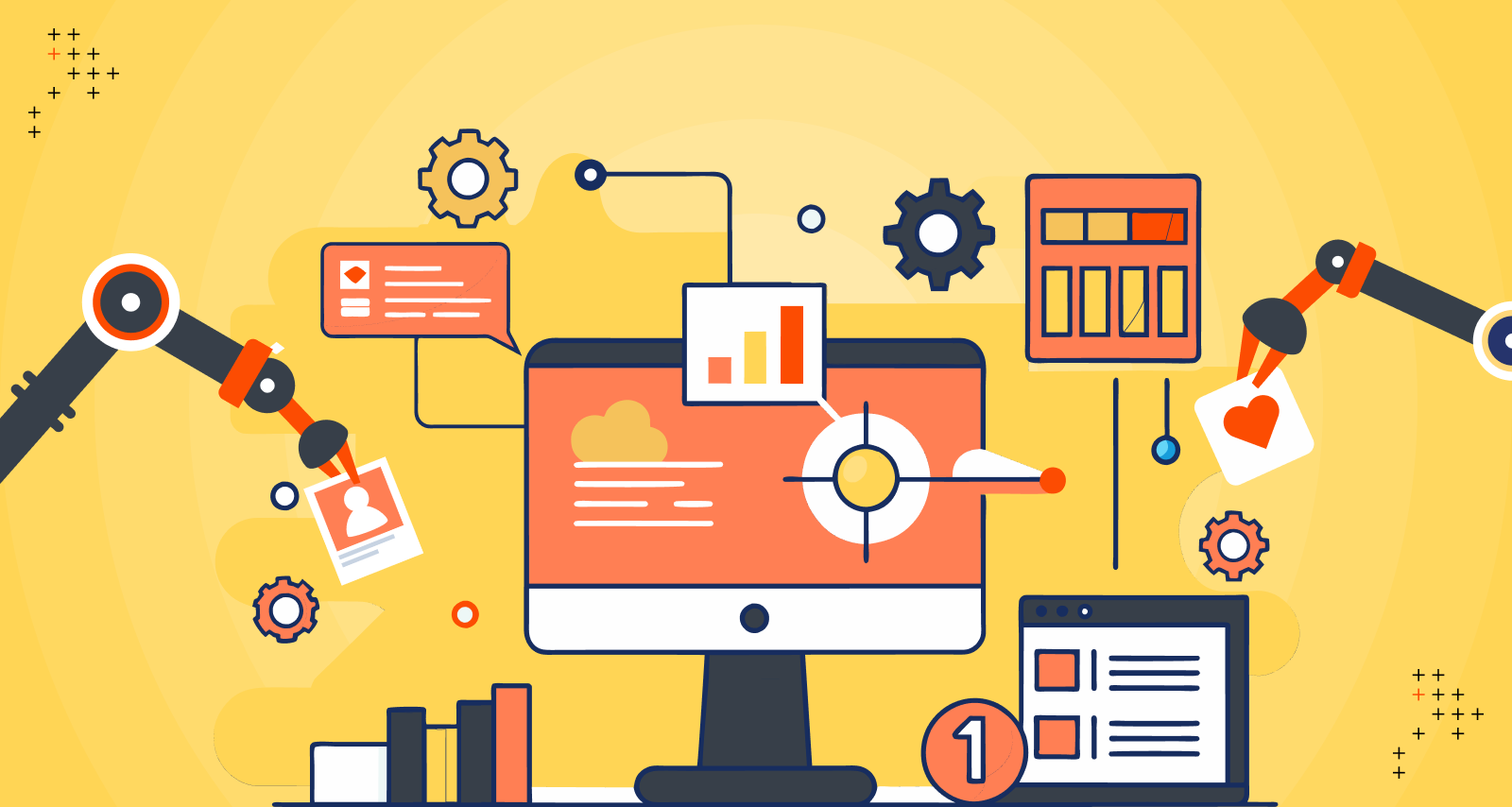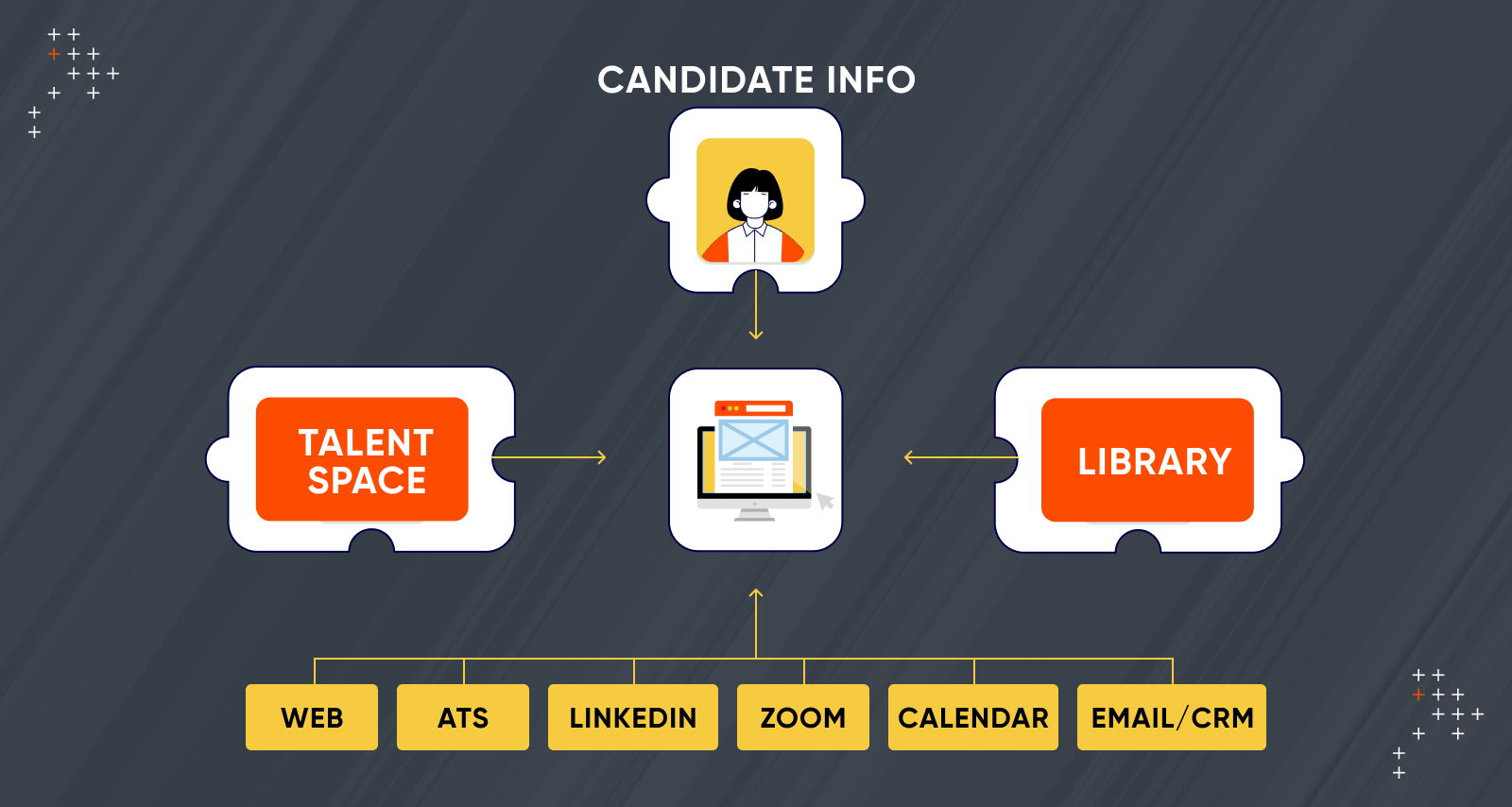A widening skill gap and a competitive talent market.
For any organization, these two problems come to the forefront when discussing recruitment.
These issues create a zero-sum game where recruiting teams that effectively present job openings to a large talent pool and efficiently funnel top candidates through the recruitment process win.
The Challenge Of The Archaic
LinkedIn Talent Solutions says recruiters spend up to 60% of their time on administrative tasks like scheduling interviews and sorting resumes. This delays hiring and affects the quality of hires, with 78% of recruiters admitting difficulty in quickly finding qualified candidates (source: Glassdoor).
Traditional recruitment processes are predominantly manual, leaving little time for other critical tasks. Managing a large talent pool becomes inefficient, leading to suboptimal hires. So, how can one act?
The Approach Of The New
According to Findem's recent report, "Generative AI, Data, and the Future of Talent," two-thirds of respondents reported that AI-enabled tools have boosted efficiency by improving sourcing (65%), expanding their team's reach without adding more staff (65%), and speeding up the hiring process (62%).
AI uncovers hidden patterns in vast amounts of unstructured data and integrates these insights to transform recruitment workflows, improving candidate experiences with timely updates and personalized communication. By automating repetitive tasks, intelligent automation (IA) frees HR professionals to focus on providing better service to candidates and organizations. In short, automation enhances HR workers' capabilities, not replace them.
What Is Recruitment Automation?
Recruitment automation streamlines the hiring process using technology. It involves automating hiring tasks or HR activities that take much of the recruiter's time. AI-driven tools manage the entire process from sourcing to onboarding.
Rethinking The Recruitment Process
In its recruitment process, Unilever was an early adopter of intelligent automation, employing machine learning to analyze video interviews and evaluate traits like problem-solving skills and resilience. This integration enabled Unilever to evaluate a larger pool of candidates efficiently and objectively, resulting in a 50% increase in hiring managers' satisfaction with candidate quality and a significant reduction in hiring time. For organizations looking to extend automation beyond recruitment, our guide on how to automate project planning offers valuable insights on streamlining complex processes.
The Broad Scope Of Automation
Technology Integration
AI-driven tracking systems streamline recruitment by automatically sorting and ranking resumes, saving recruiters time. These platforms offer real-time analytics, enabling HR teams to make informed decisions and optimize strategies. Automation forecasts hiring needs and identifies the best talent sources, allowing recruiters to be proactive.
Beyond Scheduling
Automation tools manage the entire recruitment process, from initial contact with potential candidates to onboarding new hires. For example, automated systems can send personalized emails, provide timely updates, and facilitate the completion of necessary documentation.
Diversity And Inclusion
Automation enhances diversity by reaching a wider pool of candidates and eliminating unconscious bias through anonymized candidate profiles during screening. This ensures hiring decisions are based solely on skills and qualifications. Studies show that diverse teams are 35% more likely to outperform their peers.
Remote Work Considerations
Clear communication about job expectations and work arrangements is essential, especially in a hybrid or remote work environment. Automation provides candidates with consistent and transparent information throughout the recruitment process. Scheduling tools coordinate interviews across different time zones, reducing logistical challenges.
Balancing Workloads
Intelligent automation assigns tasks based on recruiters' current workloads and areas of expertise, ensuring they can handle administrative duties and focus on high-value tasks like building relationships with top candidates and conducting in-depth interviews.
Smooth Candidate Experience
AI analyzes candidate behavior to predict drop-offs and disengagement. For example, if a candidate frequently abandons the application at a particular stage, the system flags the issue and suggests alternatives to keep them engaged. This proactive approach ensures candidates stay interested and informed, leading to a successful hiring process.
Axelerant's Approach To Recruitment Automation
Understanding The Current State
Our team understood the need to thoroughly understand current workflows to achieve desired business outcomes. We used process mining to analyze existing processes and identify areas for improvement. This analysis highlighted bottlenecks, administrative drain, and inefficient candidate interactions.
Machine Learning Integration
With the information we collected, we pinpointed where AI and automation would have the most impact. This strategic approach helped us identify quick wins and long-term improvements, ensuring our automation initiatives were well-aligned.
By understanding our recruitment processes, we integrated intelligent automation solutions to lighten administrative burdens. Automated systems now handle tasks like gathering application data and scheduling interviews, providing recruiters with a daily digest of scheduled interviews and priorities. This immediately helped with prioritization.
We streamlined the onboarding experience by deploying intelligent systems to collect, organize, and distribute data such as salary information, start dates, manager details, and offer letter terms. This reduced delays and led to a smoother onboarding process.
Our System
The Switch
Axelerant's recruitment automation journey began modestly with Zapier, Google Sheets, and Slack. Our initial goal was simple: ensure no job candidate slipped through the cracks. By extracting and analyzing data, we created daily and weekly action reports for recruiters, keeping the process organized and efficient.
.webp?width=1385&height=600&name=Body%20Image%201%20(3).webp)
However, with the growing complexity and volume of our recruitment needs, our initial setup of 35 Zapier Zaps became cumbersome and insufficient. It was clear we needed a more robust solution.
A Make Rundown
Transitioning from Zapier to Make has allowed Axelerant to scale its recruitment operations efficiently. Each scenario is meticulously designed to handle specific aspects of the recruitment process, ensuring consistency, accuracy, and timely communication.
Auto408 - Inactive Candidates
We designed a scenario to address inactive candidates within our recruitment management system. This scenario fetches applications, filters them by specific stages, and updates Google Sheets with details of candidates categorized as inactive. This streamlined process makes sure no potential hire is overlooked.
.webp?width=1385&height=600&name=Body%20Image%202%20(2).webp)
R800 Monitor - Pinpoint
Our R800 Monitor scenario focuses on tracking job applications by obtaining data from Pinpoint, processing it, and synchronizing relevant information to Slack channels and data stores. This takes care of real-time updates and seamless communication within the recruitment team.
.webp?width=1385&height=810&name=Body%20Image%203%20(1).webp)
R810-Fetch LinkedIn URL from Candidate Applications
This scenario extracts LinkedIn URLs from candidate application answers received via webhooks. It then verifies these details with an external API, ensuring the accuracy and reliability of candidate information.
.webp?width=1385&height=810&name=Body%20Image%204%20(1).webp)
R810 Offer Processing - Pinpoint
Our R810 Offer Processing scenario automates the management of job offers. It handles variables, queries APIs, and processes applicants through various recruitment stages, making the offer process smooth and efficient.

R-AUTO317 Job Requisition Notification
To keep all relevant parties informed about new job requisitions, this scenario automates notifications. It sets variables, filters rows in Google Sheets, searches records in data stores, generates messages, and sends them to Slack channels.

The Impact
"Automation has greatly enhanced the joy we find in our work. By reducing the burden of monotonous tasks, we can now dedicate more time to engaging and meaningful activities, which increases our overall job satisfaction. We can now spend more time building relationships with candidates and less time on administrative duties, which enhances both our efficiency and effectiveness as recruiters." - Kanika Bhatia, HR, Axelerant.
Scalability
Automating recruitment processes significantly increased the volume and quality of candidates within a shorter time frame. This acceleration kept top talent engaged and helped onboard them promptly.
"The post-offer coordination and collaboration have also become very smooth from what we've seen. Candidates receive timely updates which keeps them engaged."
Data-Driven Recruitment
Data collection and analysis allowed us to build detailed talent roadmaps. Our teams could identify skill gaps, forecast future hiring needs, and plan strategically for long-term growth.
Cost And Efficiency
Improved internal processes ultimately resulted in a more efficient recruitment cycle, reducing the overall cost-per-hire. Automation plays a crucial role not only in recruitment but also in ensuring fairness and transparency in performance evaluations. Discover how automation fosters fairness in our blog on the role of automation in appraisal systems.
Resource Reallocation
By automating low-value, repetitive tasks, recruiters started focusing on high-value activities that require a human touch, such as engaging with candidates, building relationships, and providing strategic advice to hiring managers.
Eliminating Hiring Bias
The unconscious bias in the recruitment process was reduced. This promoted diversity and inclusion within the organization, leading to a more driven and creative workforce.
Indicators For Automation: Do You Need It?
Overwhelmed Recruiters
According to a LinkedIn survey, recruiters spend about 13 hours a week sourcing candidates for a single role. Imagine what could be achieved if those hours were spent engaging with top talent instead.
Long Recruiting Cycles Or Unfilled Roles
Extended hiring times can lead to unfilled roles, negatively impacting productivity and team morale. Automation can significantly reduce these times.
Limited Recruiting Time Or Budget
Smaller teams or constrained budgets can benefit immensely from automation. Gartner reports that organizations using AI in recruitment can reduce costs by up to 30%.
Un-centralized Metrics
A lack of centralized data can lead to fragmented insights and poor decision-making. Automation consolidates your metrics, providing a unified view of your recruitment pipeline.
Case Studies
For more examples of companies using AI in their recruiting platforms, visit Phenom's blog.
Conclusion
The future of recruitment lies in the blend of human insight and technological advancement. Automation isn't just about efficiency; it's about exploring what's possible in recruitment to create more human systems.
The goal is to create a more dynamic and fulfilling work environment where recruiters can focus on building relationships and strategic planning, laying the foundation for more robust people management.
Visit our comments section to share how automation is making your life easier. For skeptics, book a call with our Director of IA, Michael Cannon, and experience the magic of automation firsthand!
FAQ'S

Michael Cannon, Director of Intelligent Automation
Living remotely in Taiwan with 4 incredible sons, 3 playful cats, and one fiery partner. As Director of Intelligent Automation @Axelerant, they are dedicated to building trust in Axelerant as your go-to agency partner through their journey in #Automation, #Empowerment, and #Productivity.

Saakshi Dutta, Marketing Associate
A free-spirited and eccentric explorer, Saakshi brings fresh perspectives to every endeavor—continually looking up at the stars and pushing boundaries. She is passionate about photography, filmmaking, and trekking, always eager to discover new places and tell stories that often go unheard.

 We respect your privacy. Your information is safe.
We respect your privacy. Your information is safe.



Leave us a comment